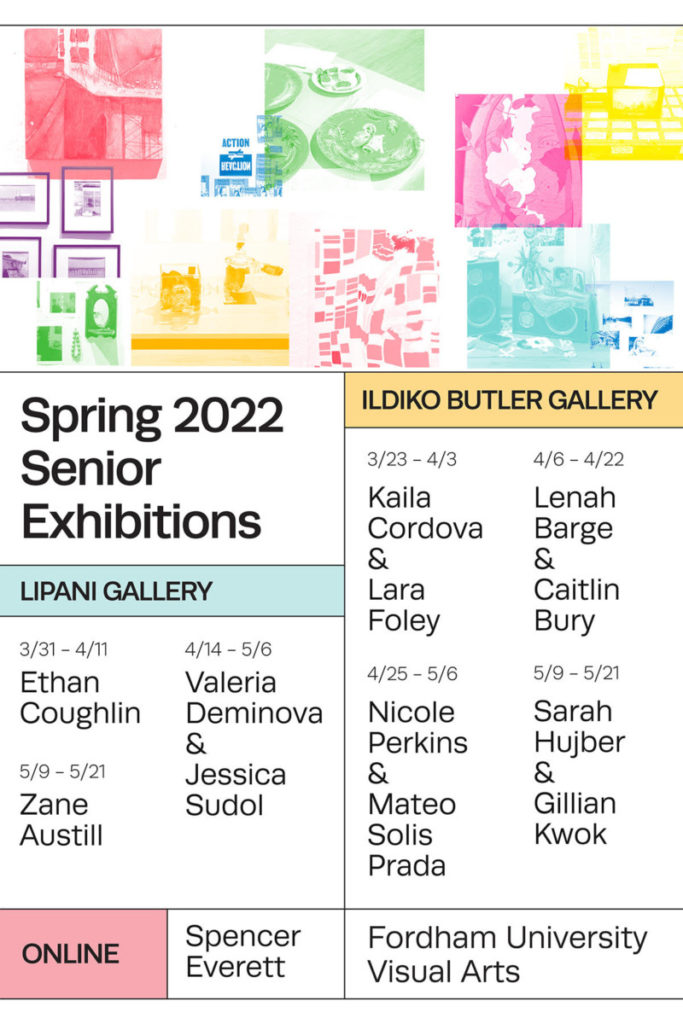Majors & Minors Meeting
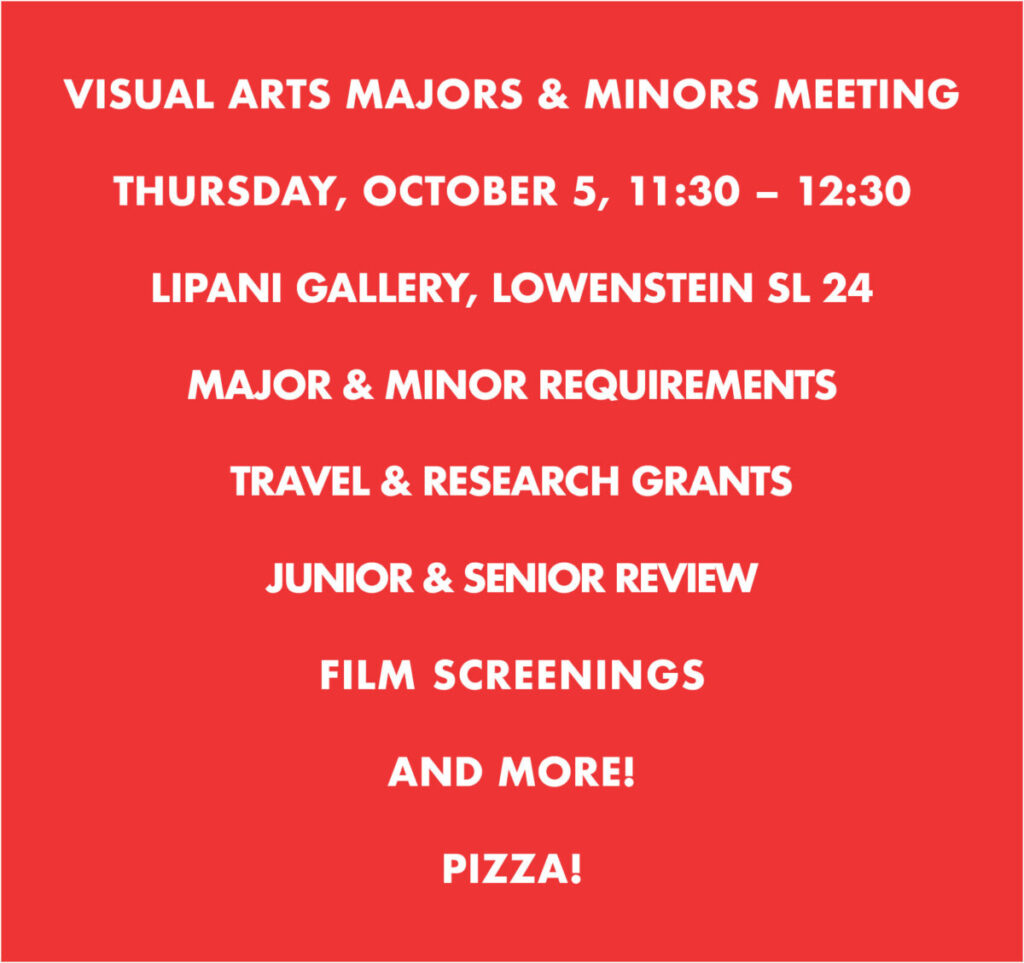


Projects selected and created by BALCONY: International Network of Curators
Participants: Raya Bruckenthal, Manuela de Leonardis, Richard Demarco, Drorit Gur Arie, Felice Hapetzeder, Michael Lazar, Paul Malone, Tomasz Matuszak, Anibal Pella-Woo, Fabrizio Perozzi, Doron Polak, Nicola Rae, Maayan Tsadka, Jan Van Woensel, Jaroslav Vančát, Joyce Yahouda, Dzintars Zilgalvis, Kriss Zilgalvis
Organizer: Stephan Apicella-Hitchcock
Fordham University’s Lipani Gallery
June 23—July 28, 2023
Public reception: Friday, June 23rd, 5—7 pm
Fordham University at Lincoln Center map
113 West 60th Street at Columbus Avenue
New York, NY 10023
Map to the Lipani Gallery
fordhamuniversitygalleries
https://balcony-art.com/
Fordham University is proud to present a new exhibition in the Lincoln Center Campus Lipani Gallery, ARCHIVUM, which brings together twelve curators from nine countries to select over thirteen artists. Through various forms, including book, installation, photography, sound, and video, this exhibition’s contributors explore what might constitute an archive. With that question as the starting premise, the works on display provide a range of interpretations of places, events, and institutions and raise numerous questions about research, commerce, history, translation, and memory.
The French philosopher Jacques Derrida stated that the question of archives is not a question of the past. It is a question of the future, a question of response, of promise, and a responsibility for tomorrow. The archive has become raw material and inspiration for many artists over the previous decades. Artists develop different levels of relationship with personal, familial, and public archival material. They move in a flexible space of history and cut across the depths of time. They decompose archival materials, disrupt and reference them, and create new narratives from concrete or imaginary archives. The archival memory they control, mark, and limit starts a conversation in which the artist decides who will enter the gates of memory.
Balcony: International Network of Curators was set up by Drorit Gur Arie, Doron Polak, and Michael Lazar in April 2020 as a network of independent international curators. The platform establishes connections between art curators to exchange professional information and initiate joint projects.
This exhibition, ARCHIVUM, is sponsored by Fordham University’s Department of Visual Art and is organized in New York by Professor Apicella-Hitchcock.
Link to the exhibition
For more information, please contact Stephan Apicella-Hitchcock.
For the Visual Arts Department Website: click here.
Instagram: @visualartsfordham
Drum roll, please—clocking in at 312 pages with over 3,000 images and approximately 87 miles of behind-the-scenes walking over nine days—the Case Study Tokyo 2023 book is complete!
Take one part working methodology from the influential 1972 book, “Learning from Las Vegas: The Forgotten Symbolism of Architectural Form,” combine it with the megacity of Tokyo, add Fordham University Gabelli students, stir for ten days in Japan, and what do you get? You acquire knowledge through experience with a small team, realized in a research volume focusing on branding, sensory marketing, architecture, design, photography, and urban planning.
Preview the entire book online.
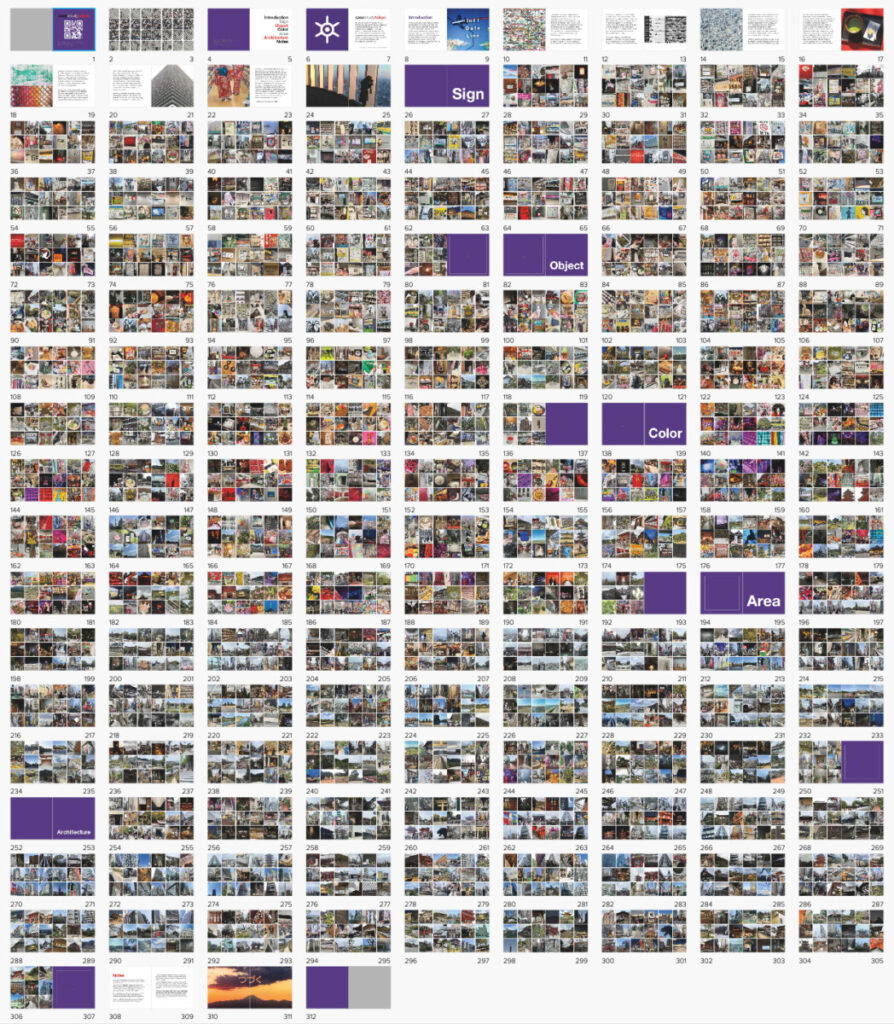
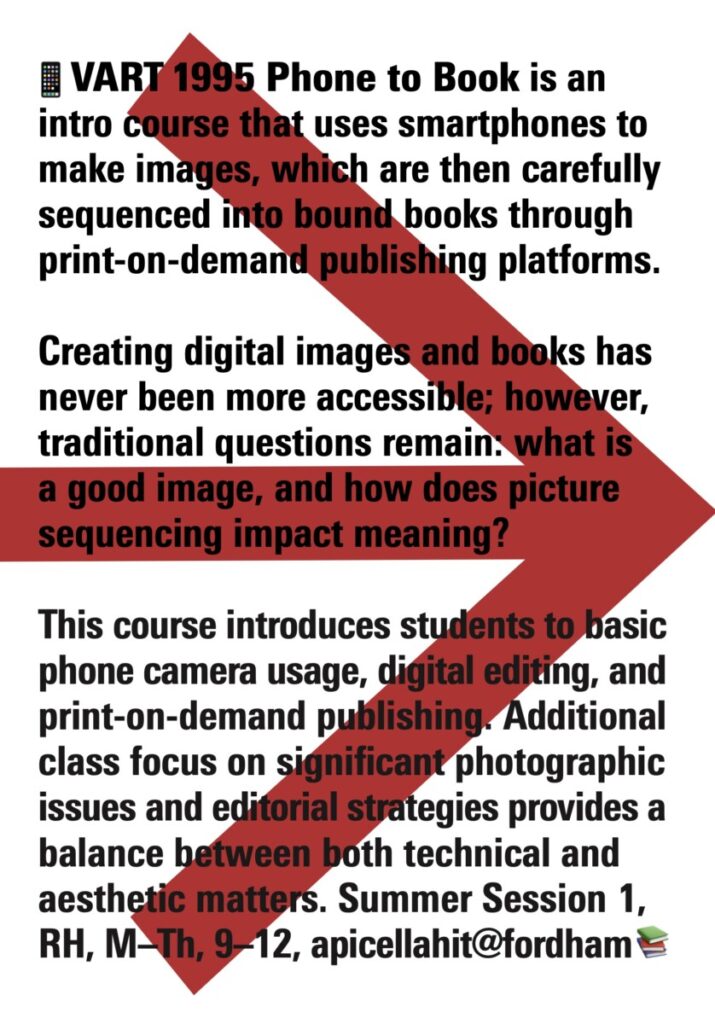
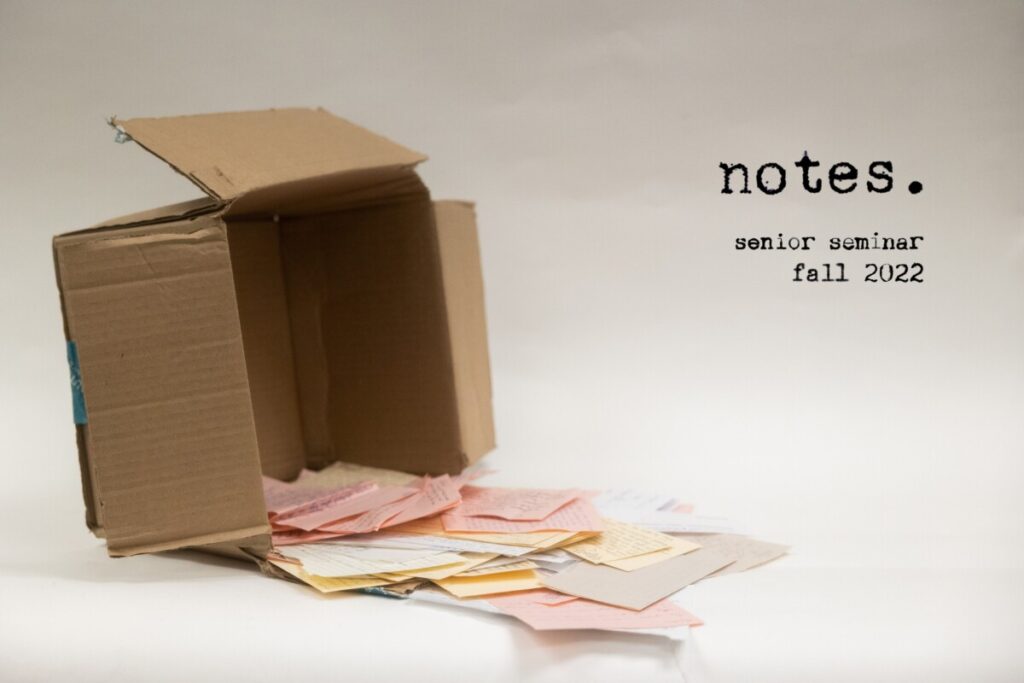
| Featuring: Lu Aubin, Alexandra Chambers, Bryson Clark, Alyssa Daughdrill, Molly Frank, Katherine Heaton, Anna Koch, Chloe McGee, Maggie McNamara, Amelia Medved, Angela Payne, Dino Romano, Slav Velkov, Schuyler Workmaster, John Zahran-Colon The Fordham University Galleries December 9, 2022–January 31, 2023 Fordham University at Lincoln Center map 113 West 60th Street at Columbus Avenue New York, NY 10023 fordhamuniversitygalleries *Outside visitors must show proof of vaccination and booster to enter the school.The Fordham University Department of Visual Arts is pleased to announce the current exhibition in Fordham University’s Lipani Gallery, notes. (Highlights from the Senior Seminar: Studio Art). This exhibition brings together the fifteen artists who participated in the 2022 Senior Seminar: Lu Aubin, Alexandra Chambers, Bryson Clark, Alyssa Daughdrill, Molly Frank, Katherine Heaton, Anna Koch, Chloe McGee, Maggie McNamara, Amelia Medved, Angela Payne, Dino Romano, Slav Velkov, Schuyler Workmaster, John Zahran-Colon. The work on display represents a snapshot of their endeavors thus far and provides a glimpse into their upcoming senior thesis exhibitions beginning in March 2023. Their chosen mediums range between architecture, film/video, graphic design, installation, painting & drawing, and photography. Accordingly, their styles and topics vary; however, their attention to craft, concept, and message is consistently deliberate and thoughtful. Please be certain to follow our talented emerging artists as they exhibit throughout the spring semester in our Ildiko Butler Gallery and the Susan Lipani Gallery.Stephan Apicella-Hitchcock, co-curator, 2023 Link to the exhibition For more information, please contact Stephan Apicella-Hitchcock For the Visual Arts Department Website: click here. |
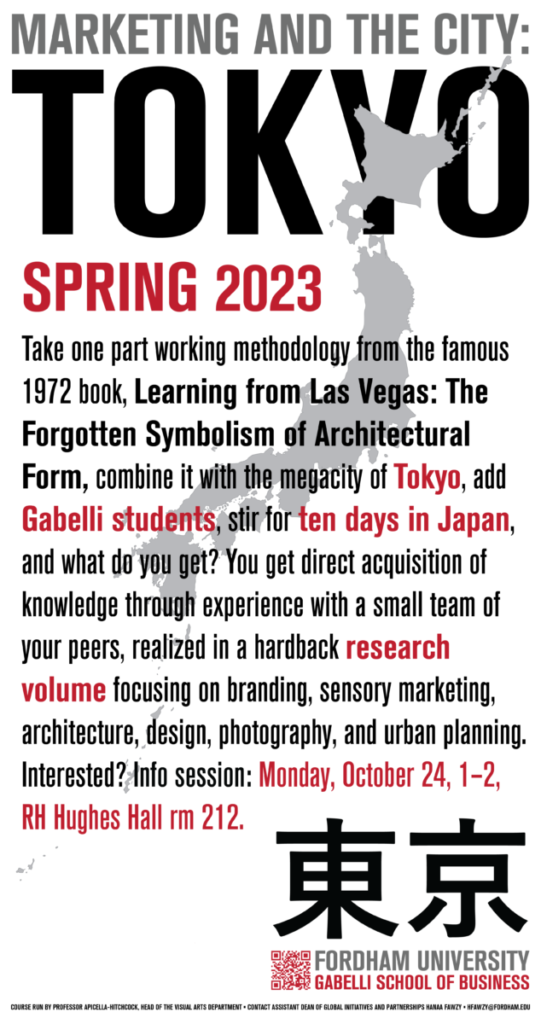
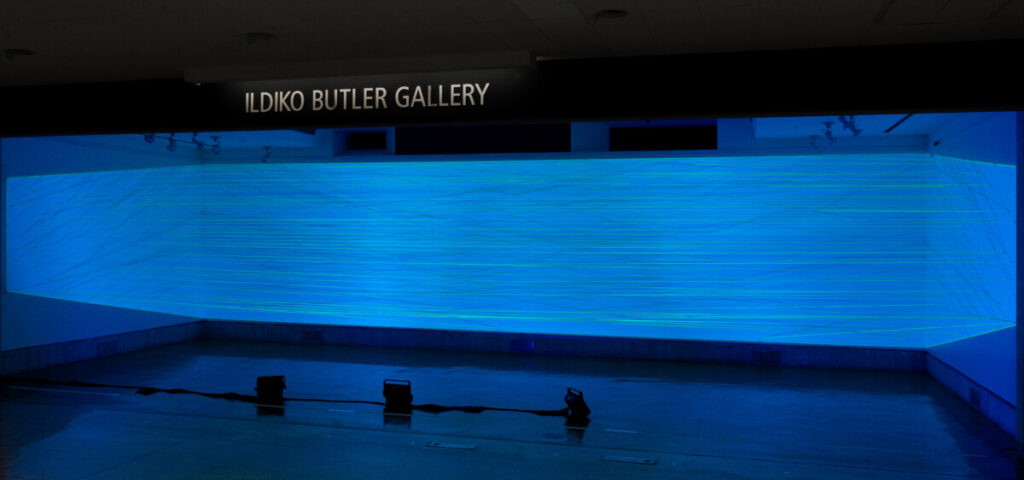
Aysha Hamouda: print(“Hello, World”)
June 3 – September 23, 2022
ILDIKO BUTLER GALLERY
Fordham University
113 W 60th Street
New York, NY
The gallery is open to the Fordham community 9am – 9pm seven days a week. Outside visitors should call ahead to inquire about current admission protocol.
Fordham University’s Ildiko Butler Gallery is pleased to present Aysha Hamouda: print(“Hello, World”). Through the use of ultraviolet light, ultraviolet-sensitive paint, and florescent yellow string, this site-specific installation investigates the idea of “collective dissociation” — a term Hamouda uses to describe the physiological and psychological effects of technologies related to the Internet, information, and the virtual world.
The artist states: “The allures of the Internet are created by algorithmic poems that project/manicure/curate custom realities for each user under the accepted and untamed credo of A Better,(Hyper) Individuated Experience. The web, prized for its global networking, has also come under heat for its main source of capital — its users’ devoted attention or DATA. Meanwhile, the web’s growth of information — factual, fictional, personal — is relentlessly on the rise. The result is a growing Virtual Collective: a cluster of hyper-individuated realities dissociated from one another and yet becoming, somehow, whole.”
Recalling work from the Light & Space movement, Hamouda’s installation plays with optics: The strings and painted wall appear, at certain vantage points depending on the viewer’s height, to flatten into a glowing blue two-dimensional rectangle behind a dense set of yellow horizontal lines. (The effect is even more pronounced when the installation is viewed head on through a camera lens.) From this perspective, every element of the piece exists in a form of controlled unity. However, as the viewer moves physically to other points of perspective, the installation reveals itself as a chaotic web with unexpected depth and complexity.
Titled after Brian Kernigham’s 1972 book A Tutorial Introduction to the Language B., which first introduced “Hello, World” to illustrate variables within programing, print(“Hello, World”) (a Python version of “Hello, World”) explores viewers’ perception of a kinetic, fragmented “whole” and poses the question: How do we construct a sense of grounding when confronted with the groundless? By giving physical form to the primordial skeleton of the virtual world — the rectangle, its pale bluish light — print(“Hello, World”) lays bare our innate human desire to impose structure, systems, and order on a reality infinitely more complex and in constant flux.
Aysha Hamouda (she/they; b. 1991, Switzerland) is an installation and multimedia artist based in the U.S. Her work has been exhibited internationally, including in Germany, Switzerland, China, and the United States. In 2019, she was part of Wavelength Reset, an international platform and traveling exhibition based in Shanghai, China. As part of that project, her work Input/Output was shown at the Times Art Museum in Beijing and the Artron Museum in Shenzhen. Hamouda received a BFA from Lyme Academy College of Fine Art in 2014 and an MFA from Syracuse University in 2018.
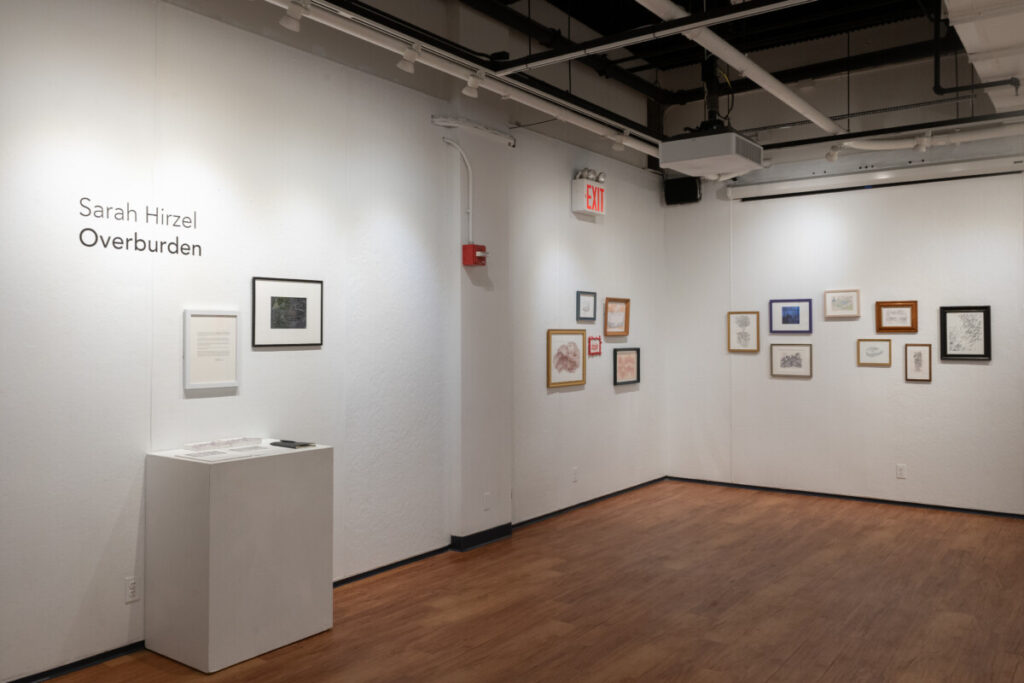
Sarah Hirzel: Overburden
June 3 – September 23, 2022
LIPANI GALLERY
The gallery is open to the Fordham community 9am – 9pm seven days a week. Outside visitors should call ahead to inquire about current admission protocol.
Fordham University’s Lipani Gallery is pleased to present Sarah Hirzel: Overburden, an exhibition of thirty-five digitally altered, pigment-printed drawings of the stuff we make, use, and leave in our wake in our time on this planet—hatchets, hairbrushes, computers, high rises, oil rigs, musical instruments, fireplaces, drainpipes, cars, boats, bones, furniture, roads, garbage—and of the organic matter that grows up among it.
Hung salon-style in an eclectic array of frames found by the artist in attics, thrift stores, and other out-of-the-way corners, the pieces in this show are by turns poignant, poetic, humorous, dark, and sometimes just simply odd, bringing together the mundane and the momentous in a kind of landfill logic both chaotic and stratified. In one piece, mounted in a small frame of carved black roses, a computer chip sprouts grass; in another, a battle between trumpets and leaf blowers rages; in yet another, the New York skyline morphs into a purple crystal.
Most people are familiar with the term overburden in its verb form—to load with too many things to carry. Fewer know its definition as a noun—rock or soil overlying a mineral deposit, archaeological site, or other underground feature. The works in this show plumb both meanings of the word, conveying the weight of accumulation yet retaining a sense of curiosity about what remains hidden, waiting to be discovered. Indeed, Hirzel likens her creative process to that of a detective searching for clues in a world that feels upside down, inside out, and still, somehow, strangely beautiful.
Sarah Hirzel is an artist and educator based in Massachusetts where she draws, wrangles a chaotic garden, hangs out with her family, and supports student artists at the Massachusetts Institute of Technology. She is a founding staff member of MIT’s Voxel Music and Arts Innovation Space and curates the MIT Wiesner Student Art Gallery. She is a graduate of the Yale School of Art and Wesleyan University, both located in post-industrial central Connecticut. You can find her in the household accent section of your local thrift shop.
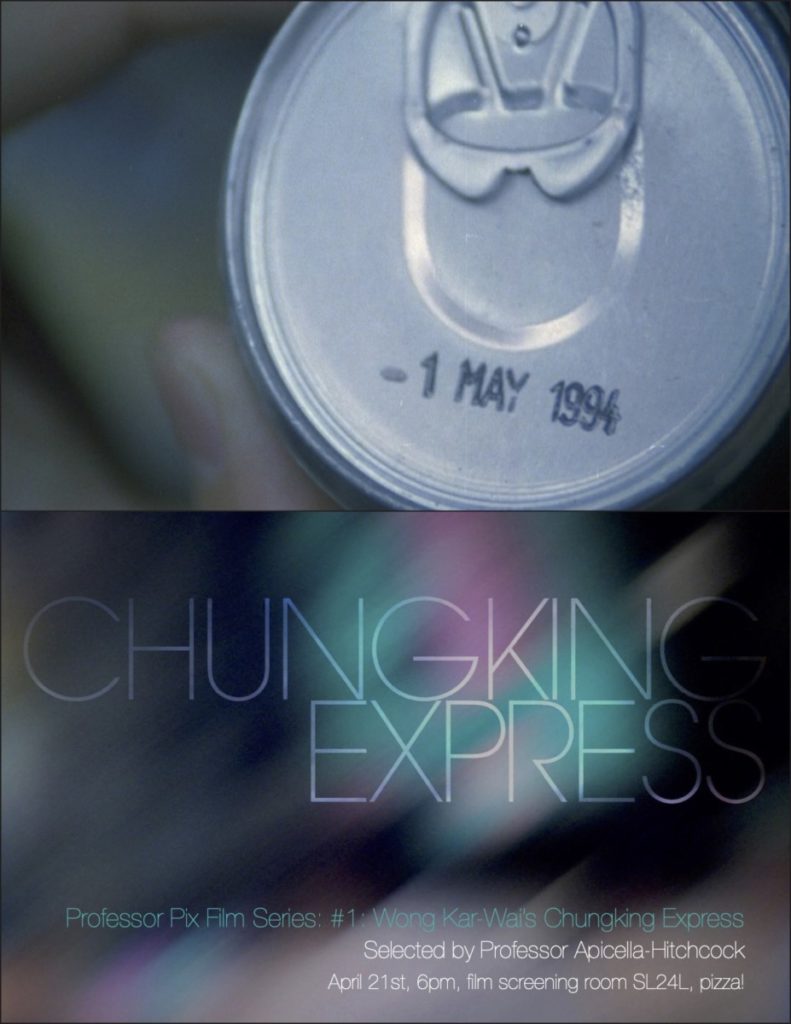
The 2022 Senior Thesis Exhibitions have begun, so come out and support our amazing artists!
